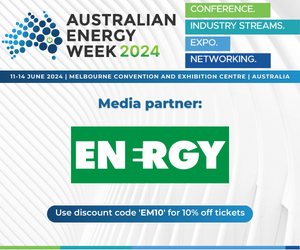by Natasha Reifschneider, Director, ESA2 Environment and Planning
Before any new energy development can begin, there is months of work that will go into ensuring that the project receives approval to commence. Here, we outline some of the key steps in the development approvals process, with tips to ensure you get each step right from the outset.
A well-planned development approvals process for any energy infrastructure project is critical.
Much of the application detail has to do with the technical components of the technology proposed, however the ‘non-technical’ project manager or director has a key role to ensure the project proposal has every chance for success.
This is particularly important where the regulator is a council or government department that may have limited knowledge of the project.
Selecting the right consultant for your team, making sure your proposal is well developed, and engaging with regulators who will be assessing your application are just some of the key actions that will set your project up for success.
In this article, we take a closer look at the top tips that will set you up for success during the approvals process.
A well-developed application
Project development managers are often working to a tight timeline and budget, which pushes them to compress the upfront time for development of the proposal information and push through a submission to the regulators.
Here are a couple of tips to make sure your application is ready for submission:
» Allow enough time for project development – a well thought-out proposal with clear elements which are committed before you formally submit your application will save your project time and money. If you enter the Development Application phase of the project with missing information, it’s likely to come across to the regulator and raise unnecessary attention. Reworking of projects cost time and money, and can result in a loss of momentum in the project team, and may put the community offside. It is worth spending more time and energy on specific detail before you launch into submission.
» Take out the tech – complex projects have an element of tech talk, however Development Planners in council and state government are not engineers and do not need to know the mechanics of every piece of plant equipment. Diagrams and language in your development application should be simple and easy to understand. Use plain language to keep the audience interested in the project layout and impacts. Keep the tech in the appendix of the report unless it is required upfront. Development applications are often advertised to the wider community who need to understand the project and purpose to respond in a meaningful way.
Engage with the regulators
Engaging face-to-face with regulators builds trust and sets your project up on a solid platform for clear communication. Here are some tips for successful engagement:
» Understand regulator roles – large infrastructure projects with several legislative approvals will attract many public servants. It is helpful to map out the individuals at each government department you will be dealing with during the life of your application to develop a clear understanding of:
» Their role and responsibility on your project
» Limits of their roles – what decisions are outside of their control?
» How they want to communicate throughout the project
» Who they directly report to
» Other projects they are assessing, and where your project falls in this priority list
» Engage early – when your application is in its infancy, start engaging with the regulator. It’s never too early to engage, as it demonstrates your openness about the project and desire to receive feedback to achieve a positive end result. Once you have worked through key project details with your team, such as the location and general design, it’s worth considering a pre-application meeting to introduce the project formally to the regulator, to work through legislative and application requirements, potential red flags, and to develop a relationship. Take the regulator on a site visit to show them the site you are considering for the proposal and give them the opportunity to provide a preliminary response before you lock in all elements of your project design.
» Community Engagement Plan – during your early engagement with the regulator, consider providing a copy of your Community Engagement Plan which sets out how and when you intend to engage with the community and key stakeholders. Providing this plan early will allow the regulator to provide input into the engagement strategy and ensure you have identified all stakeholders groups that require consultation. Your engagement plan should define negotiables and non-negotiables, set out when and how you will engage and allow for ongoing refinements of the Engagement Plan.
The right consultant team
It is critical to engage the right consultant to prepare your development application. You want a consultant team you can trust, has appropriate experience, knowledge, and communication skills.
Key skills to look for include:
» Industry experience – selecting a lead consultant that has project experience which is directly relevant to your project is vital to its success. A development planner with 20 years of experience in the residential sector is likely to be out of their depth on an industrial project such as a major wind farm. It is the experience of the lead consultant that is important, as they lead the team and the process. Engaging a lead consultant that has successfully delivered a project like yours will greatly benefit the project.
» Local experience – choosing a consultant team that has state-based experience is key. They will know the legislation, the locality of your project, understand the regulator and can provide important past learnings of projects in the locality. Local knowledge will also allow the team to hit the ground running as they will have some knowledge of the site, issues and community expectations before they commence the project.
» Effort – understand the offer the consultant is making in their proposal. Is the lead consultant engaging regulators and driving the project and communicating with the client, or is it the junior consultant? If you have an expectation that you will be working with the lead consultant directly, you need to make sure this is clear in the consultant offer. It is totally appropriate to request a breakdown of hours and rates for each consultant to provide this information.
» Relationship – hire a consultant who has a good working reputation with the regulator. The services of a consultant who has an established relationship with the regulators can reduce the likelihood for project delay. The consultant is likely to have a clear understanding of the regulator requirements and address them at the outset, saving the project time and money. The project manager and project director also need to ensure they can maintain a positive relationship with the consultant they select. Your project may take many months to work through, and you need to be able to work with the preferred consultants all the way through the project life-cycle.



















